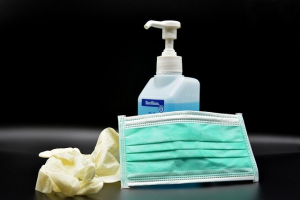
Oxidative stress is the bio-medical term for a lack of balance between 1) the production of harmful reactive oxygen and reactive nitrogen species and 2) the protective action of antioxidant systems. According to the news network of the Mayo Clinic, oxidative damage has been linked to several conditions such as Alzheimer’s, cancer, cataracts, diabetes, heart disease, macular degeneration, and Parkinson’s.
Free Radicals and Oxidative Damage
The reactive oxygen and reactive nitrogen species are popularly referred to as free radicals. They are molecules produced as natural by-products of metabolic processes and as a consequence of exposure to pollutants, to heavy metals, to industrial chemicals, to some drugs, to some forms of radiation including x-rays, and to cigarette smoking.
Some free radicals have beneficial roles in the body such as acting as cell signaling molecules. Harmful free radicals can cause damage to cells, DNA and RNA, proteins, and lipids.
The Antioxidant Defense System
Given the ongoing threat of oxidative damage, we humans have developed antioxidant mechanisms to neutralize the harmful free radicals. The antioxidant defense system comprises the following systems [Zoidis 2018]:
- the water-soluble antioxidants (Vitamin C and the amino acid taurine)
- the fat-soluble antioxidants (carotenoids, Coenzyme Q10 in its reduced form, and vitamins A and E)
- the antioxidant enzymes (superoxide dismutase, catalase, and glutathione peroxidase)
- the seleno-enzyme antioxidant enzymes (the glutathione peroxidase and thioredoxin reductase antioxidant systems)
Selenium-Dependent Antioxidant Enzymes
In particular, the selenium-dependent glutathione peroxidases and the thioredoxin reductases are essential antioxidant seleno-enzymes that protect cells from oxidative stress [Zoidis 2018].
Selenium, Selenoproteins, and Heart Disease
The damage to cellular lipids, proteins, and DNA caused by excess free radicals has been associated with heart diseases. Excesses of harmful free radicals can cause the oxidation of low-density lipoproteins, which is, in turn, associated with the development of atherogenesis in heart disease.
In a 2019 multinational, prospective, observational cohort study, Bomer et al showed that heart failure patients with serum selenium concentrations below 70 micrograms/Liter had worse New York Heart Association class, more severe signs and symptoms of heart failure and poorer exercise capacity (on the 6‐min walking test) and poorer quality of life (on the Kansas City Cardiomyopathy Questionnaire). Furthermore, heart failure patients with serum selenium levels between 70 and 100 micrograms/Liter had symptoms almost as bad as the patients under 70 micrograms/Liter [Bomer 2019].
Selenium, Selenoproteins, and Cancer
A 2020 meta-analysis of 37 population-based prospective studies [cohort, nested case-control studies, randomized controlled trials, and interventional studies] of selenium and cancer shows that extra selenium intake from supplements is protective against cancer at levels above 55 micrograms/day. The effect may vary from one form of cancer to another [Kuria 2020].
The meta-analysis included 15 studies conducted in the USA, 11 studies in Europe, 9 studies in Asia, and 2 studies in Australia. The included studies addressed cancers in bladder, blood, breast, colon and rectum, esophagus, liver, lung, pancreas, prostate, skin, stomach, and other cancers. The daily selenium dosages ranged from 0 to 400 micrograms/day, and the total number of cancer incidences was 13,484 out of a total of 579,878 study participants [Kuria 2020].
Selenium, Selenoproteins, and Immune System Response
In Table 1 of a 2018 article entitled “Selenium, Selenoproteins, and Immunity,” Avery et al summarize the current knowledge of the various selenoprotein functions in the human body. They make the point that nearly all tissues are affected by changes in selenium status or selenoprotein expression [Avery 2018].
For the most part, selenium supplementation has a stimulatory effect on the immune system, which can be measured in such parameters as T cell proliferation, NK cell activity, innate immune cell functions, etc. The stimulatory effect is best seen when the selenium supplementation increases selenium concentrations from inadequate to adequate levels. The benefit to the immune system of increasing an adequate selenium concentration to a supra-nutritional level remains to be demonstrated [Avery 2018].
Since the 1990s, we have known that a deficiency of selenium in the host organism results in an increased virulence of RNA viruses such as coxsackievirus B3 and influenza [Beck 2004]. Selenium supplementation has shown significant clinical benefits in viral infections, in particular in HIV-1 infections, in liver cancer associated with hepatitis B, and in hemorrhagic fever. Selenium supplementation seems to have immunomodulatory effects relevant to several viruses including COVID-19 cases in China [Zhang 2020].
Selenium, Selenoproteins, and Thyroid Disorders
The human thyroid gland contains greater quantities of selenium per gram of tissue than any other body organ. The selenium-dependent deiodinase (Type I, II, III) enzymes play important roles in thyroid hormone metabolism [Tingii 2008].
One possible mechanism of selenium supplementation in reducing the effect of thyroid autoimmunity (= immune system responses against healthy thyroid cells) involves the role of glutathione peroxidase and thioredoxin reductase antioxidant defense systems to neutralize harmful free radicals, in particular hydrogen peroxide free radicals, during thyroid hormone synthesis.
Bottom Line:
Selenium Supplementation Protects Against Oxidative Stress, Inflammation, and Infection [Zoidis 2018].
Sources
Avery JC, Hoffmann PR. Selenium, selenoproteins, and immunity. Nutrients. 2018;10(9):1203.
Beck MA, Handy J, Levander OA. Host nutritional status: the neglected virulence factor. Trends Microbiol 2004;12:417–23.
Bomer N, Grote Beverborg N, Hoes MF, et al. Selenium and outcome in heart failure. Eur J Heart Fail. 2019;10.1002/ejhf.1644.
Kuria A, Fang X, Li M, et al. Does dietary intake of selenium protect against cancer? A systematic review and meta-analysis of population-based prospective studies. Crit Rev Food Sci Nutr. 2020;60(4):684-694.
Tinggi U. Selenium: its role as antioxidant in human health. Environ Health Prev Med. 2008;13(2):102-108.
Zhang J, Taylor EW, Bennett K, Saad R, Rayman MP. Association between regional selenium status and reported outcome of COVID-19 cases in China. Am J Clin Nutr. 2020;111(6):1297-1299.
Zoidis E, Seremelis I, Kontopoulos N, Danezis GP. Selenium-Dependent Antioxidant Enzymes: Actions and Properties of Selenoproteins. Antioxidants (Basel). 2018;7(5):66.
The information presented in this review article is not intended as medical advice and should not be used as such.
15 September 2020
